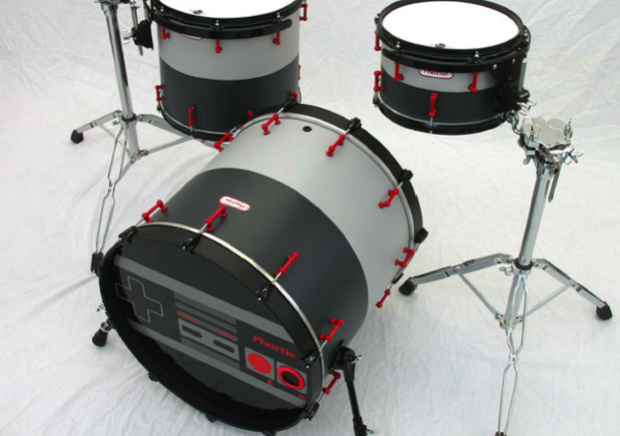
The filters really allow the samples to come alive, and while it's not as large sounding as a Lindrum, it sounds tighter and punchier, and is no wonder it's been a mainstay in such a diverse assortment of genres (from disco and boogie to 80s rock, dub, hip hop, drum n' bass and even dancehall).īut the DMX sounds can also be re-contextualized in a more modern track and really shine - in fact, it can work quite well as a psuedo-acoustic drumset.

The DMX drums are iconic, and instantly recognizable, so naturally they fit into more retro productions. The results: a strange, distant cousin of the DMX: We modulated the ride cymbal with a pitch LFO, adjusted the start point on Toms to turn them into massive sub hits, reversed hi hats, and even created looping rimshots and shakers, whose delays get faster the higher up in pitch they go. Even the inherent hiss of the 612 played a major role in the sampling process - by leaving snare tails long at the end, the hiss acts as a kind of "air" that gives the samples depth, and reverb. We played DMX drum hits into the 612, changing pitches on the DMX, recording in at different levels (from clean to smashed), changing sample rates on the 612, and applying various filter and decay settings, all the while sampling every useable pitch for each drum voice. While the DMX sampling session was calculated, the 612 session was a lengthy, freeform jam. The 612 was Akai's first sampler, and is an amazing sounding 12 bit sampler with a user-definable sample rate (via midi note), a clippable input, start / stop sliders, and a sweet analog filter (just like the DMX) to top it all off, so it seemed like the perfect companion. The DMX samples are solid and straightforward - so in an effort to make things weird we ran it through our favorite sounding sampler of all time - the Akai S612. Through parallel hard clipping (Overstayer M-A-S), we increased the fatness of the Bass Drum tightened the claps with an SPL Transient Designer, and used a tube EQ to darken drum various drum hits.Īfter sampling was complete, all of the hits were then chopped and painstakingly arranged into individual hits and 16x hit kits. Using our trusty Overstayer Saturator in parallel, we added more harmonics and dirt to the attack by EQing a little bass out before the saturation, and back in afterwards (via API EQs) we were able to really drive the midrange on things like the Toms. Once the clean samples were captured we did a round of processing to provide some color and RMS (loudness) to the kit. Each drum voice was tuned by hand (tilting back the hood of the drum machine and accessing the little thumb wheel) 24 times. We tracked every hit through an API 512 preamp, to tape, and through an Apogee Symphony MKII. In an effort to retain the exact character and punch of the original machine, the recording process was kept simple.


But it also features a range of sounds the DX does not - a more LM1 type clap, that amazing 90s house rimshot and tambourine, a ride cymbal, and a second group of toms. Like the DX, the DMX has a warm bass drum, crunchy snares, boxy boogie toms, classic hi hats and shaker. And despite being digital, the filters give it an unmistakeable organic warmth, making the sounds come alive, and sit easily in a mix. All samples pass through the famous Curtis 3320 analog filter chip, and are output through crunchy, old skool converters.įrom this you might assume the DMX sounds Lo Fi - but you'd be wrong! Instead, the sound is sophisticated and classic - like a pseudo - acoustic drum set frozen in time. At the core of the DMX are 11, 8 bit PCM acoustic drum samples that have been companded (compressed and expanded) to increase their dynamic range, making the sound quality approximately 12 bit in the analog domain.


 0 kommentar(er)
0 kommentar(er)
